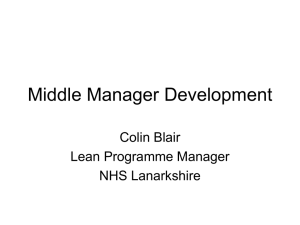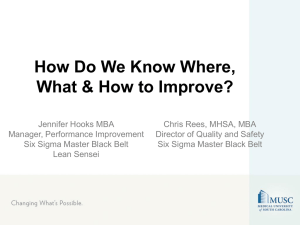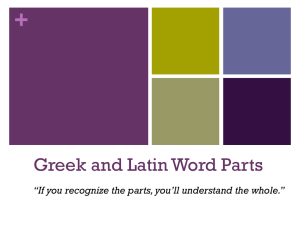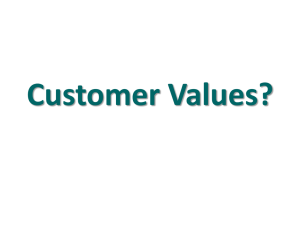PowerPoint-presentatie
advertisement
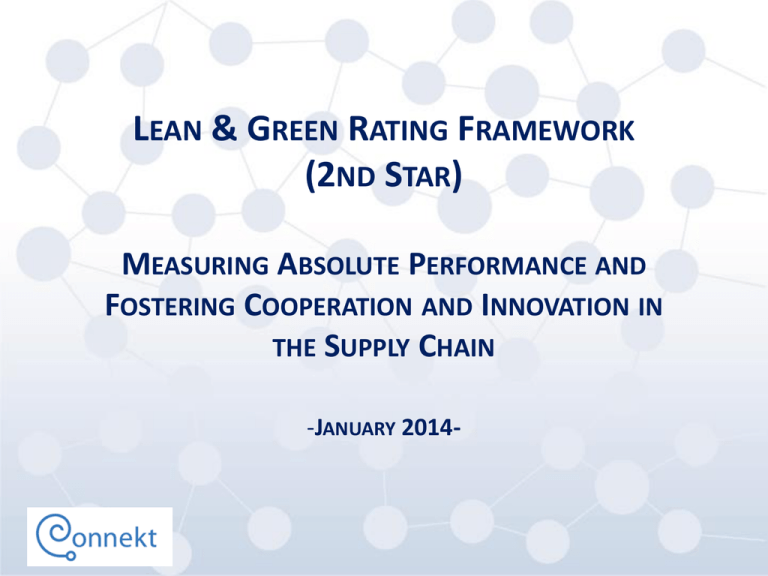
LEAN & GREEN RATING FRAMEWORK (2ND STAR) MEASURING ABSOLUTE PERFORMANCE AND FOSTERING COOPERATION AND INNOVATION IN THE SUPPLY CHAIN -JANUARY 2014- Lean and Green Process From Award to Star: Realizing an ambitious CO2 reduction target, relative to own baseline. 1 • Participant develops an action Plan for 20% CO2 reduction in 5 years period • Upon external verification of Action Plan (with good result) the participant receives Lean and Green Award 3 • Participant monitors and reports performance of the 20% reduction target. • When 20% reduction is externally certified the participant receives the Lean and Green Star, and can join the 2nd star program. 2nd star onwards: Continuous improvements in sustainable logistics and comparison with peers/benchmark 1 • Participant enrols into the 2nd star program committing to continuous improvement in sustainable logistics. 2 • Upon external verification of CO2 performance and qualitative measures on data quality, cooperation and innovation participant receives a 2nd star. 3 4 • Participant monitors progress and reports status on a yearly basis. • External verification against sustainable logistics benchmark on a yearly basis Lean and Green Star Winners have voiced the wish to set new challenges. • The Lean and Green Star Winners have realized a CO2 reduction of at least 20%, relative to their own (baseline) performance. • Star winners have voiced the wish for: • new targets to foster continuous improvements in sustainable logistics • comparison with peers (stand out against peers) • focus on cooperation and innovation in the supply chain • a uniform calculation methodology to specify and monitor challenging targets. Lean and Green has translated these requests into the Lean and Green Rating Framework: a practical, fair and comparable methodology, through which challenging levels/targets can be defined, measured and awarded. The Lean and Green Rating Framework has a quantitative and a qualitative dimension Quantitative dimension 1. Measurement of KPIs in compliance with uniform calculation methodology (based on EN 16258) 2. Minimum levels of data accuracy for KPI calculation. 3. Carriers comply to a minimum target on Euronorm (average). Qualitative dimension 1. Two measures on cooperation and innovation to reduce CO2. 2. One measure on sustainable logistics (beyond CO2) 3. Shippers demonstrate how carriers are stimulated to become more sustainable. In addition participants maintain the level realized by the Award/Star phase (20% CO2 reduction compared to baseline year of the Award/Star phase). In the Lean and Green Rating Framework performance is based on two Key Performance Indicators. 1. Network performance: CO2 per unit (ton, cubic meter, …) 2. Transport performance: CO2 per unit.km (ton.km, m3.km , ...) Network performance is an expression of how effective the logistics (and with that the transport) network to ship a good/product from the source to the client is organized. Transport performance is an expression of how efficient the actual transport is carried out on a part of the supply chain for one or more shippers. The two KPI’s can be plotted on a two dimensional field, indicating the overall performance of the shipper and carrier. Timeline of the first 2nd star program in the Netherlands January 2013 January 2014 Submission deadline end Q1 January 2015 Award Ceremony: Q2 Focus of KPI measurement: full year 2013 Focus of qualitative measures: full year 2014 The yearly application and verification covers a 2 year period. The quantitative measurement covers the preceding calendar year (transparency on performance), while the qualitative measurement covers the running calendar year (transparency on ambitions). The Lean and Green Rating Framework is aligned to European developments on CO2 calculation methodologies. • The new European Standard EN 16258 ‘Methodology for calculation and declaration of energy consumption and GHG emissions of transport services’ and the additional work of the COFRET Project for allocating energy use/emissions in distribution shipments provide the building blocks for the Lean and Green framework. • Participants can use the Green Freight Europe database for data submission. • The 2nd star can be applied across Europe, and is the first step toward a European Lean and Green Program. Appendix: White Paper

